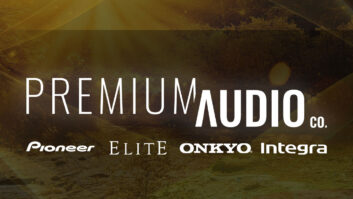iBiquity Digital vows to improve the AM-band performance of its PAC audio codec in time for digital-radio receiver launches planned for later this year, but that timeframe might be overly optimistic.
That’s because iBiquity had been upgrading its PAC codec for almost a year when AM broadcasters raised another round of concerns in late April during an iBiquity-sponsored demonstration for broadcasters, receiver makers and trade associations.
Before the April demo at NPR studios, Kenwood planned August shipments of a car receiver, Audiovox planned ’03 aftermarket car radio shipments, and Delphi was ready for calendar 2003 shipments of an OEM radio for 2004 model-year-vehicles. Home radio shipments were planned this year by Kenwood, Harman Kardon and Yamaha.
iBiquity’s latest effort to improve AM PAC’s performance started after the April demo and after the National Radio Systems Committee (NRSC) temporarily suspended standard-setting efforts for iBiquity’s digital AM/FM technology. The NRSC decision followed complaints by select AM broadcasters about the sound quality of the in-band on-channel (IBOC) technology’s audio codec at a 36kbps bit rate. That bit rate is needed to squeeze a stereo audio program into an AM station’s constricted bandwidth. PAC’s FM-band bitrate, in contrast, is 96kbps.
The previous effort to improve AM PAC began more than a year ago after April 2002’s NAB show, where AM PAC was demonstrated to the industry at large for the first time and was criticized by AM broadcasters. At the time, iBiquity had just integrated PAC into its field-tested RF technology for the first time and knew that PAC improvements were needed, said iBiquity marketing VP Dave Salemi. “There have been tremendous improvements since then,” he said.
iBiquity made codec improvements last year, conducted subjective listening tests in August and handed over the results to the NRSC on Oct. 15 for review, Salemi continued. On Feb. 6, the NRSC’s evaluation working group met for the first time to consider the results. At that meeting, however, iBiquity withdrew the report, contending that it had advanced the codec four to five generations beyond what was tested for the report, said David Lehrer, NAB’s advanced engineering director.
In early April, iBiquity staged demonstrations at the NAB convention of its latest generation codec, then, in late April, the company held demonstrations at NPR facilities. At the demo, said Lehrer, broadcasters still voiced concerns over 36kbps PAC. Broadcasters, he added, still haven’t heard AM PAC at a 20kbps rate. That’s the data rate at which radios would receive digital AM mono in challenging signal conditions.
Salemi told TWICE that a PAC upgrade could be completed over the next two to three months to meet that schedule. He said he was optimistic because “we’re a codec-technology company.”
A timely PAC-enhancement decision would be compatible with Kenwood’s receiver schedule because a PAC upgrade would require no software or hardware changes to existing receiver designs, Kenwood senior VP Bob Law said. If the codec is changed completely however, new receiver hardware will be required, postponing Kenwood’s car audio shipments until next year.
At this point, Yamaha said it doesn’t know if it will be able to go through with plans for fall shipments of a home receiver.
Alpine marketing VP Steve Witt said he needs a codec decision by August in order to ship Alpine car receivers in time for next year’s aftermarket selling season, which begins in April.
While iBiquity tweaks, rollouts of digital broadcast equipment continue, the company said. That’s because software upgrades at the station level can be made to enhance the PAC codec or potentially replace it with the AAC codec, said iBiquity senior VP Jeff Jury explained.
For more details on iBiquity’s codec efforts, seewww.TWICE.com













